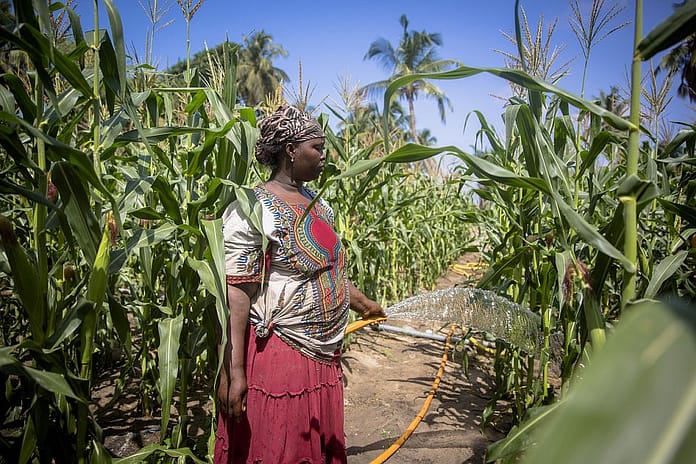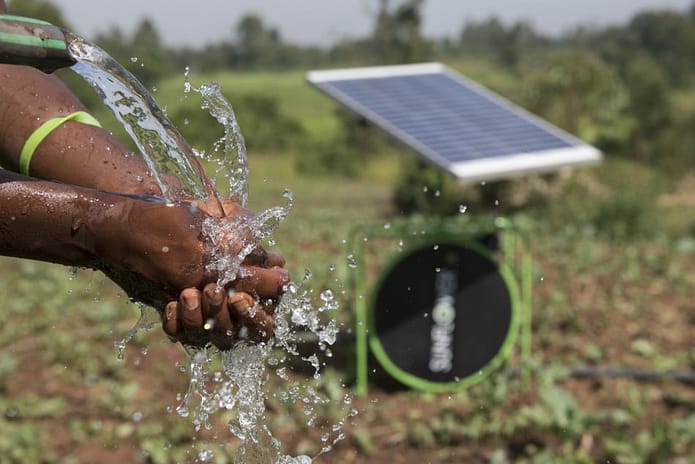By Paul Pavelic, Senior Researcher, and Mohammad Faiz Alam, Researcher, IWMI

Photo: Mohammad Faiz Alam/IWMI
Enhancing groundwater availability through MAR
India, as the largest user of groundwater globally, has been promoting managed aquifer recharge (MAR) over the past two decades to mitigate the negative impacts of extensive groundwater use. Multiple states have been implementing MAR programs. Among them, Gujarat has been a frontrunner where MAR emerged as a grassroots initiative led by farmers and community leaders, and has now gained prominence state-wide with the support of government and non-government organizations.
Within Gujarat, special emphasis was on the Saurashtra region which covers one-third of the state and is most prone to water scarcity and droughts. The region has seen intensive development of check dams as the dominant form of MAR. Check dams, in the South Asian context, are essentially small dams built across waterways from earthen or masonry materials to retain runoff flows and promote infiltration of runoff to underlying aquifers. Check dam development was greatly accelerated following the extended drought of 1999 – 2002, during which the average rainfall was about 35% less than normal. Up until 2018, an estimated 27,000 check dams have been constructed in the region.
Knowledge gaps remain
Whilst many studies have assessed the impacts of check dams that have highlighted their contribution towards increasing groundwater storage and agriculture production in the region, the views of the scientific community concerning the attribution of MAR has been divided. Recently, IWMI carried out a systematic study to assess the impact of check dams that accounts for the dynamic nature of water supply (e.g. rainfall amount and intensity, performance of MAR) and water demand (e.g. changing cropping patterns, irrigated areas, irrigation practices). The study focused on the Kamadhiya catchment, situated in the upper reaches of the larger Bhadar river basin. The analysis is carried out for the period from 1983 to 2015 (33 years) and compared two distinct periods: pre-check dam development (prior to 2002) and post-check dam development (after 2002).
Observed groundwater storage gains due to high rainfall years
Our results showed that the period of intensive check dam development (i.e., post 2002) also coincided with above-average rainfall (i.e., 27% above the average of 638.6 mm) and a higher frequency of above average rainfall years (i.e., 8 years during the post-2002 witnessed above average rainfall in contrast to only 3 events pre-2002). Thus, the groundwater storage gains observed from earlier studies could be in-part attributed to the wetter climate. In fact, the data showed that when groundwater storage is compared across years of the same rainfall, groundwater storage gains have been limited/negligible post development of check dams.
Rapidly increasing demand has outpaced increases in supply from MAR
The irrigation water demand, which are mostly met from groundwater, increased by around 150% across the catchment post-2002 as compared with the earlier period. This increase resulted from an increase in cropping area and irrigation intensity of major irrigated crops – cotton and wheat. This increase in demand has exceeded the overall increase in groundwater recharge due to MAR. Overall increase in demand was approximately twice the increase in groundwater recharge from MAR.
Check dams provide limited benefits in dry years
In dry years when rainfall is scant, irrigation demand was highest. However, at the same time, the increase in supply by check dams was constrained by low runoff (low rainfall results in proportionately less runoff than higher rainfall). This led to a huge supply-demand deficit. The study found that the increase in recharge by check dams was smaller by around nine times in comparison to the increase in demand. Without access to other irrigation sources, crop production suffered significantly in dry years. This showed limited capacity of MAR systems to mitigate the impacts of low rainfall years in the region. This is made worse by the nature of the underlying hard rock aquifers that have limited groundwater storage resulting in poor inter-annual carry-over of storage (i.e., recharge in above average rainfall years cannot fully compensate for low recharge in dry years). For above average rainfall years, check dams do add additional significant recharge. However, this too can only partially compensate for the increased demand seen in the catchment.
Policy implications
The findings from this study, whilst unique to Gujarat, add to the body of literature from other semi-arid regions of the world including Tanzania, Tunisia, and even other parts of India, that have shown limited capacity of small-scale MAR interventions to fully mitigate the impacts of drought. This is especially true in situations with increasing demand. Thus, any focus on MAR should be complimented by a greater emphasis on the management of groundwater resources and irrigation demand in order to achieve the long-term goals of sustainable groundwater use. With MAR being prioritized in Gujarat and many other states of India, there is also a clear need to ensure these investments are suitably located, designed, operated and maintained to improve their functioning and the benefits received by farmers.
Source:
Alam M.F., Pavelic P., Villholth K.G., Sikka A. and Pande S. (2022) Impact of high-density managed aquifer recharge implementation on groundwater storage: A case study from Gujarat, India. Journal of Hydrology: Regional Studies 44, 101224
















